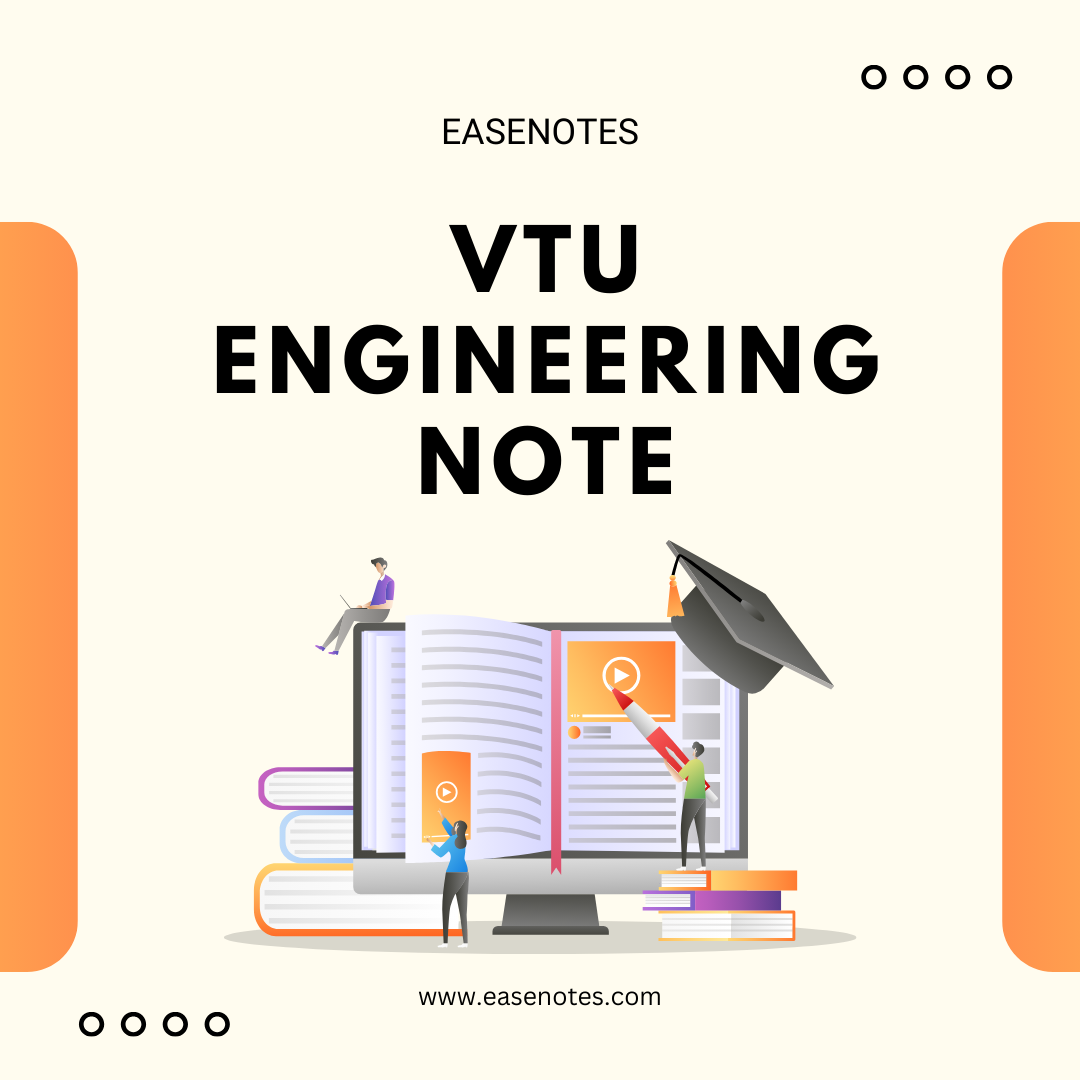
- contact@easenotes.com
- Phone: (+91) 9964716807

BESCK104B-Introduction To Electrical Engineering
VTU University notes on 1st SEM 1st SEM & 2nd SEM physics/Chemistry Cycle 2022 scheme notes 2024. Study materials and previous year question papers on easenotes 2024.

Introduction: Conventional and non-conventional energy resources; General structure of electrical power systems using single line diagram approach. Power Generation: Hydel, Nuclear, Solar & wind power generation (Block Diagram approach). DC Circuits: Ohm’s Law and its limitations. KCL & KVL, series, parallel, series-parallel circuits. Simple Numerical.
A.C. Fundamentals: Equation of AC Voltage and current, waveform, time period, frequency, amplitude, phase, phase difference, average value, RMS value, form factor, peak factor. (only definitions) Voltage and current relationship with phasor diagrams in R, L, and C circuits. Concept of Impedance. Analysis of R-L, R-C, R-L-C Series circuits.Active power, reactive power and apparent power. Concept of power factor. (Simple Numerical). Three Phase Circuits: Generation of Three-phase AC quantity, advantages and limitations; star and delta connection, relationship between line and phase quantities (excluding proof)
DC Machines: DC Generator: Principle of operation, constructional details, induced emf expression, types of generators.Relation between induced emf and terminal voltage.Simple numerical. DC Motor: Principle of operation, back emf and its significance. Torque equation, types of motors, characteristics and speed control (armature & field)of DC motors(series & shunt only). Applications of DC motors. Simple numerical.
Transformers: Necessity of transformer, principle of operation, Types and construction of singlephase transformers, EMF equation, losses, variation of losses with respect to load. Efficiency and simple numerical. Three-phase induction Motors: Concept of rotating magnetic field, Principle of operation, constructional features of motor, types – squirrel cage and wound rotor. Slip and its significance simple numerical.
Domestic Wiring: Requirements, Types of wiring: casing, capping.Two way and three way control of load. Electricity Bill: Power rating of household appliances including air conditioners, PCs, laptops, printers, etc. Definition of “unit” used for consumption of electrical energy, two-part electricity tariff, calculation of electricity bill for domestic consumers. Equipment Safety measures: Working principle of Fuse and Miniature circuit breaker (MCB), merits and demerits. Personal safety measures: Electric Shock, Earthing and its types, Safety Precautions to avoid shock